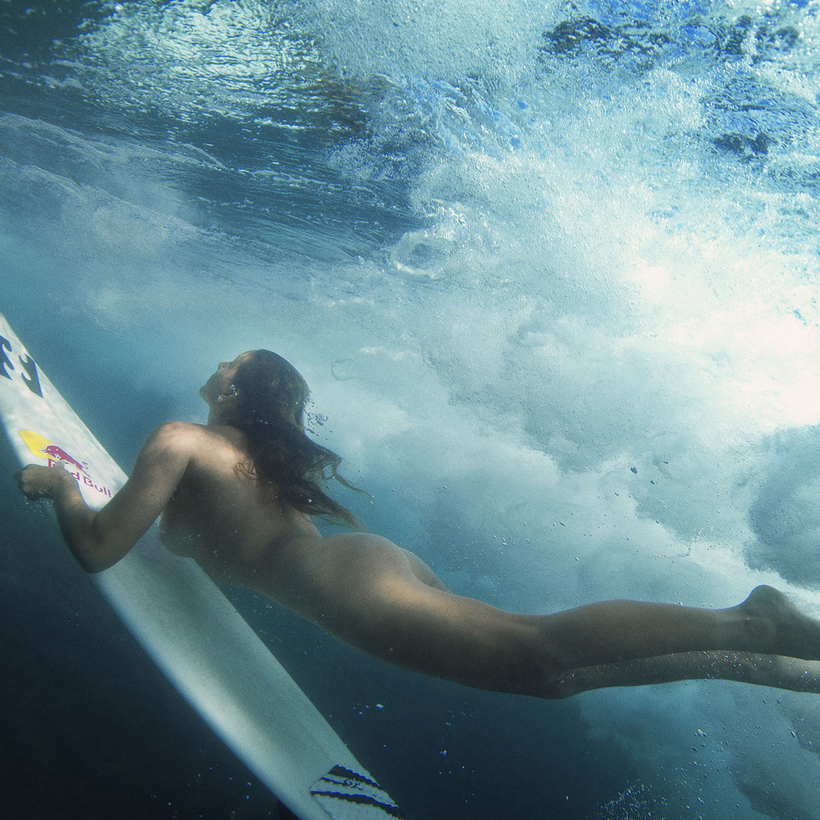Who would’ve imagined that Agatha Christie, arguably the most popular mystery novelist of all time, was an avid surfer and likely the second-ever British citizen to ride waves in Hawaii?
Even 10 years ago, would anyone have predicted that women would be regularly riding waves exceeding 60 feet? Would it be a surprise that surfing in Ecuador was introduced in 1960 by a six-foot, female Olympic-swimming champion?
Could you have guessed that the first surfer in Cape Town was a woman taking her place in history (albeit unknowingly) as the first person recorded to stand-up surf in South Africa—with a photo appearing in a local newspaper in 1919?

These were but a few of the surprising stories I uncovered while researching Women on Waves. But in all likelihood even the most devoted surf aficionado would not know all this. “History,” the old adage claims, “is written by the victors.” What is implicit in that statement is that no matter what history it might be, the narrative has predominantly been written by men.
Seven-time world surf champion Layne Beachley suggested I title my book The Surf Is Shit, Send Out the Girls! I didn’t take her suggestion, but her story is astonishing. It was a line Beachley overheard while in competition, and just one example of what women surfers have had to face while fighting for parity in the sport they loved—one that has its origins as the “sport of queens,” in homage to Hinahanaiakamālama, the Hawaiian goddess of the waves.
The Sport of Queens
Years into my research, it became obvious that women’s surf history is a history of surfing itself. Over my tenure in the surf culture, and as editor and publisher of Surfer magazine, I met and became friends with many of the most remarkable women who surf. I had championed them over the years and was inspired to tell their stories in one volume. What surprised me was the ocean of new discoveries and little-known women’s achievements that unfolded. Wave after wave of captivating stories began to take form.

I learned that Marilyn Monroe and Hollywood movie mogul Darryl Zanuck’s daughter Darrylin were both avid surfers at Malibu long before Gidget, of the eponymous 1959 film, made her world-changing debut. Who could have predicted that the competing love affairs of Darrylin and Marilyn (who were fighting to impress the same actor and surfer, Tommy Zahn) would be the impetus for the most significant design innovation in surfing history—the advent of shorter, lighter, streamlined surfboards?
Perhaps my most surprising discovery was the inverse relationship women had with the birth of modern surfing compared to the ancient women wave riders of Polynesia. While the Hawaiian women were considered equal in the surf and many queens were regarded as better surfers than their male counterparts, the vast majority of women at the beach in the 1960s—an era of women’s liberation in many arenas—were more likely to be relegated to sitting on the sand rather than riding the surf. But from Hawaii’s last heir to the monarchy, Princess Ka’iulani, who saved surfing from extinction, to four-time world champion Lisa Andersen, who won her first world title after she bore her first child, the spirit of women on waves has been irrepressible.
An homage to Hinahanaiakamālama, the Hawaiian goddess of the waves.
To give some perspective to these discoveries, along with the achievements of here and now, consider: in 2020, Maya Gabeira, a fearless Brazilian woman, broke the record for the largest wave ever ridden by a woman or a man that year—a nearly 74-foot mammoth at Nazaré, in Portugal.

The equally impressive fact, however, was that the second-largest ride, in 2020, was caught by Justine Dupont, a demure, driven French surfer whose wave was, according to the judges, just “two to three feet smaller” than Gabeira’s.
In the decade since my initial research, women’s surfing has swept forward like a rising swell, gaining height and strength each year. Female surfers are leaders in the fight for equal professional pay, and they have drawn on struggle and triumph in a 400-year saga. The surprise is not the fascinating stories of more than 800 of these heroines, but that so many of their grand adventures have gone unsung.
Jim Kempton’s Women on Waves: A Cultural History of Surfing, from Ancient Goddesses and Hawaiian Queens to Malibu Movie Stars and Millennial Champions will be published on July 6 by Pegasus

